Geology
Type of resources
Available actions
Topics
Keywords
Contact for the resource
Provided by
Years
Formats
Representation types
Update frequencies
Service types
Scale
Resolution
-
This dataset contains information about multiple palaeoecological proxies – pollen, non-pollen palynomorphs, spores, microcharcoal, plant macrofossils and macrocharcoal – generated from stand-scale (forest hollow-based) analyses of Cambusurich Wood Site of Special Scientific Interest, Scotland (Ordnance Survey grid reference: NN 62741 34679). The site’s chronology and loss-on-ignition (LOI) analyses are also provided. Full details about this dataset can be found at https://doi.org/10.5285/60952512-b682-4bd6-a609-365f64944fda
-
This is a spatial dataset containing polygons representing different geology types in the Moor House National Nature Reserve, northern Pennines, England. The survey was undertaken by G.A.L. Johnson under a grant by The Nature Conservancy in the 1950s and 1960s. Full details about this dataset can be found at https://doi.org/10.5285/0e3aefb2-ce86-4d09-8ff0-6d165dfd48db
-
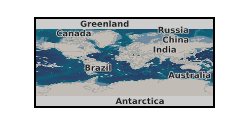
Direct geological observations made during field work, tied to positional information collected by hand-held GPS.
-
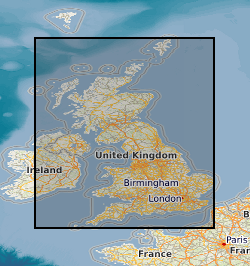
In 2011 the British Geological Survey (BGS) decided to begin the assembly of a National Geological Model (NGM) from its existing and on-going geological framework models , comprising integrated national crustal, bedrock and Quaternary models. The bedrock component is the most advanced of these themes and comprises both the calculated models and a complementary network of cross-sections that provide a fence diagram for the bedrock geology of Great Britain. This fence diagram, the GB3D_v2012 dataset is available in a variety of formats from the BGS website www.bgs.ac.uk as free downloads. It complements the existing 1:625 000 scale mapsheets published by BGS utilising the same colour schema and geological classification. The 121 component cross-sections extend to depths between 1.5 and 6 km; they have an aggregate length of over 20,000 km, and they are snapped together at their intersections to ensure total consistency. The sections are based on the existing BGS geological framework models where they cut through them, they also take account of the vast wealth of published data on the subsurface structure of Britain both from BGS and in the literature. Much of this is in the form of cross-sections, contour maps of surfaces, and thicknesses (isopachs). The fence diagram has been built in the Geological Surveying and Investigation in 3D (GSI3D) software. It is envisaged that this dataset will form a useful educational resource for geoscience students and the general public, and also provide the bedrock geology context and structure for regional and catchment scale studies. The fence diagram was built in 2009-12 using funding from the BGS National Capability Programme and the Environment Agency of England and Wales. 14 expert regional geologists compiled the sections.
-

Collections of miscellaneous items mainly of semi-current value, including some field observations supplementary to 1:10560/1:10K mapping, arranged on 1:10K or One-Inch sheet basis. Set up in 1950's filing miscellaneous records for Scotland and Northern England. Records of archival value for permanent retention being transferred to Land Survey Archives (LSA). Indexed in the Land Survey Record Index (LSRI).
-
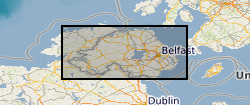
The 1:250k Geological Maps of Northern Ireland comprise the Superficial Deposits Map (Drift, 1991) and the Bedrock Map (Solid Geology, 1997). These maps identify landscape areas based on their lithology. The scale of the maps is 1:250 000 and provides a simplified interpretation of the geology that may be used as a guide at a regional level, but should not be relied on for local geology. Superficial deposits are younger geological deposits formed during the most recent geological time; the Quaternary. These deposits rest on older rocks or deposits referred to as bedrock. The superficial deposits theme defines landscape areas with a geological name and their deposit-type or lithological composition. The Superficial map shows the deposits within the extent of the six Counties of Northern Ireland. The Bedrock map comprises the bedrock geology and contains dykes and geological faults. Bedrock geology describes the main mass of solid rocks forming the earth's crust. Bedrock is present everywhere, whether exposed at surface in outcrops or concealed beneath superficial deposits or water bodies. Geological names are based on the lithostratigraphic or lithodemic hierarchy of the rocks. The lithostratigraphic scheme arranges rock bodies into units based on rock-type and geological time of formation. Where rock-types do not fit into the lithostratigraphic scheme, for example intrusive, deformed rocks subjected to heat and pressure resulting in new or changed rock types; then their classification is based on their rock-type or lithological composition. This assesses visible features such as texture, structure, mineralogy. Dykes defines small, narrow areas of a specific type of bedrock geology; that is igneous rocks which have been intruded into the landscape at a later date than the surrounding bedrock. Geological faults occur where a body of bedrock has been fractured and displaced by large scale processes affecting the earth's crust (tectonic forces). The Bedrock map shows the main bedrock geological divisions in Northern Ireland and coverage extends to the west into the Republic of Ireland. The printed map includes a stratigraphic column. Digital datasets have been derived from the maps and comprise three layers. 1. Superficial polygons, 2. Bedrock polygons and 3. Linear features. Attribute tables describe the polygon features. These data are generalised and superseded by the 1:10k Geological Maps of Northern Ireland.
-
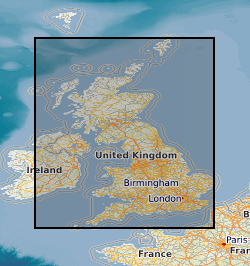
In 2011 the British Geological Survey (BGS) decided to begin the assembly of a National Geological Model (NGM) from its existing and on-going geological framework models , comprising integrated national crustal, bedrock and Quaternary models. The bedrock component is the most advanced of these themes and comprises both the calculated models and a complementary network of cross-sections that provide a fence diagram for the bedrock geology of Great Britain. This fence diagram, the GB3D_v2014 dataset is available in a variety of formats from the BGS website www.bgs.ac.uk as free downloads, it supercedes the earlier 2012 version. The model complements the existing 1:625 000 scale mapsheets published by BGS utilising the same colour schema and geological classification. The component cross-sections extend to depths between 1.5 and 6 km; they have an aggregate length of over 25,000 km, and they are snapped together at their intersections to ensure total consistency. The sections are based on the existing BGS geological framework models where they cut through them together and incorporate around 300 deep stratigraphic boreholes across England and Wales. The sections also take account of the vast wealth of published data on the subsurface structure of Britain both from BGS and in the scientific literature. Much of this is in the form of cross-sections, contour maps of surfaces, and thicknesses (isopachs). The fence diagram has been built in the Geological Surveying and Investigation in 3D (GSI3D) software. It is envisaged that this dataset will form a useful educational resource for geoscience students and the general public, and also provide the bedrock geology context and structure for regional and catchment scale studies. The fence diagram has been built in stages between 2009-14 using funding from the BGS National Capability Programme the Environment Agency of England and Wales, and the Nuclear Decommissioning Authority. Some 16 expert regional geologists compiled the sections.
-
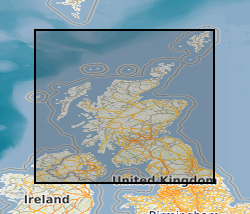
Miscellaneous geological records for Scotland and Northern England of current or semi-current interest filed in order of accession. Some 65 accessions held which will be subject to review for permanent retention/destruction. Dataset created c.1970 and Indexed on Land Survey Record Index Database.
-
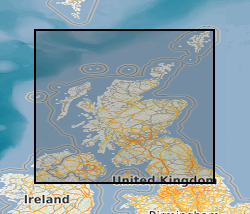
The Land Survey Archives consists of records of the Geological Survey in Scotland for permanent retention dating from 1860s onwards. The collection comprises geologists' field notebooks, miscellaneous field observations and reports, historical and biographical material, correspondence files, photographs, etc. Includes archival material deposited by outside individuals and organisations, eg. NCB (National Coal Board) Bore Book Collection. Survey archival material for Northern England will be incorporated. Some 380 accessions held amounting to over 7,000 items. Indexed at collection level in Land Survey Record Index (LSRI). Plans abstracted and held separately in Land Survey Plans Collection.
-

The BGS Rock Classification Scheme (RCS) is a comprehensive classification scheme for all types of rocks and unconsolidated sediments worldwide. It is intended to be used for classification of single rock samples and can be used without any knowledge of field relationships. It has been designed for use by people with a wide range of geological knowledge; from experienced professional geologists to technicians and drillers. It also allows names to be assigned according to the level of information about the sample. The system if hierarchical, ranging from very simple names such as igneous rock to highly detailed names such as mugearite, that can only be applied after chemical analysis. Rock names can consist of a root name e.g. granite and several qualifiers that impart more information e.g. grey-biotite-bearing granite. The classification scheme has been implemented as a hierarchical dictionary of codes for all rock types. The classification scheme is described in BGS Research Reports 99-02, 99-03, 99-06. The BGS Rock Classification Scheme was devised between 1993 and 1996 in response to a need from the Digital Map Production System project.
 NERC Data Catalogue Service
NERC Data Catalogue Service